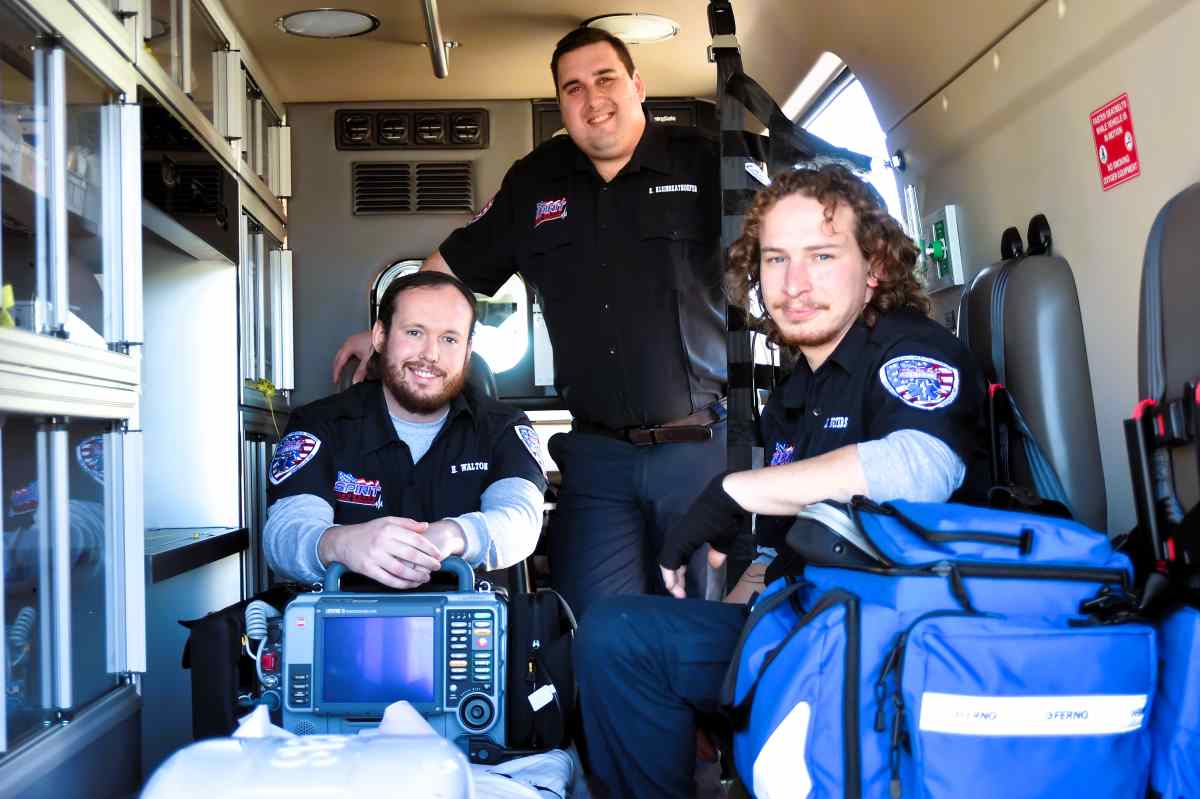
GREENVILLE – After spending the past few years searching for ways to address its paramedic staffing shortages, Spirit EMS has gone halfway around the world to begin solving this challenge.
On Friday, Spirit EMS President/CEO Brian K. Hathaway welcomed three Australian Paramedics to Spirit’s workforce, making it one of the first known EMS organization in the United States to undertake this relatively new work visa program.
“Since COVID, like almost every other EMS organization in the nation, Spirit EMS has struggled to have a sufficient number of paramedics to meet our daily needs,” Hathaway stated. “EMT classes and paramedic classes were not able to take place because of that nasty word – COVID.”
Spirit EMS has more than 130 agencies, facilities, and hospitals on a waiting list requesting their services, but they do not have the employees required to fill the need, so they began looking elsewhere for answers to maintain service to their existing client base.
To overcome the workforce shortage, Spirit EMS has partnered with an Australian EMS recruiting firm to bring paramedics from another continent to serve its coverage area throughout western Ohio and eastern Indiana.
So why Australia?
Hathaway shared in that country, there are more paramedics graduating from classes than paramedic jobs available.
“Australian paramedics are eager to get the experience they set out for when they obtained their bachelor’s degree in paramedicine,” Hathaway said. “Therefore, bringing them to the United States allows them to get the experience they are looking to achieve and allows us, as an organization, to fill an unmet need. It’s a win-win, any way you look at it.”
The president shared while there are certainly still paramedics out there, in recent years many have begun working in emergency rooms because of the nursing shortages and/or been recruited away from private EMS organizations like his to better wages and benefits. Private family-owned ambulance businesses are becoming extinct because it is increasingly difficult to compete with the wages and benefits offered by private EMS agencies owned by investment firms, municipal run organizations with a tax base, and/or large-scale hospitals.
“Because Medicare and Medicaid set our reimbursement rates, we’ve can’t just raise our fees like most other business to keep up with the cost of inflation,” Hathaway explained. “Many public operated ambulance services have the ability to rely on tax subsidies in addition to collecting billings, which allows them to be able to offer much better benefit packages than what we in the family-owned private EMS sector can offer. We are solely dependent on what the state and federal government is willing to give us combined with having to rely on patients to pay their high deductibles and co-payments that the big insurance companies are putting back onto the backs of their insureds.”
The advantage of bringing paramedics to America on a work Visa is that other organizations, municipalities, and hospitals alike cannot entice the employees hired. Those coming over to America are here on a two-year work Visa, that can be renewed, should the candidate choose to do so.
Despite having all the training in Australia, they still have to meet and pass all national and state EMS training requirements in the United States before caring for patients. Hathaway said the Australian recruitment company worked with an accredited EMS school in the United States to ensure that all of the required credentialing requirements get met in a matter of weeks of arriving in the country. Spirit EMS worked to make sure the Aussies had housing and transportation available upon arriving.
“It has been quite a journey,” explained Spirit EMS Operations Manager, Brian Brown. “It started a couple of years ago going to EMS World and hearing a gentleman speak from England and hearing of their first-hand experience. They went to Australia and were able to bring back fifty paramedics. I immediately thought, if they can do it, why can’t we do it, so we started down that journey.”
Hathaway said bringing the paramedics to the United States was certainly outside the box thinking, but he’s sure it will help address the staffing woes the company has experienced, shorten wait times for patients needing their services, provide the company the opportunity to expand its advanced life support services to those on its waiting list, and ultimately improve patient outcomes.
As a private EMS agency, a bulk of the work Spirit EMS handles is interfacility transfers and transports from one hospital to another for patients needing higher levels of care. It also services 9-1-1 contracts, responds to emergency and non-emergency calls at extended care facilities, and handles several special event standbys each year. Spirit EMS has seven stations throughout western Ohio and eastern Indiana extending as far north as Defiance, Ohio, and as far south as Liberty, Indiana. Station locations include their headquarters in Greenville, with satellite stations in Celina, Defiance, Houston, Sidney, Van Wert, and Liberty, Indiana.
“We are very excited about the opportunity to have this new program and be one of the first ambulance services in the entire nation to do this,” Hathaway added. “I owe it to the management team at Spirit EMS and Eric and his team in Australia that has worked with us to make this happen. I’m also forever grateful to our three new Australian mates who have made the journey halfway around the world to join the Spirit EMS family. We know it’s a big commitment by them as well, but it’s been great to see our community welcome them all with open arms.”
To date, Spirit EMS has three Australian paramedics working with an additional three expected to arrive in February 2024.
“Some of them are on board to bring their families with them which is very exciting,” Hathaway noted. “It’s going to be a boost not only to the local economy but to the communities we serve throughout western Ohio and eastern Indiana.”
Featured photo (provided): Spirit EMS’s new Australian Paramedics (L-R) Hugh Walton, Karl Kleinekathoefer and Phoenix Waters.

